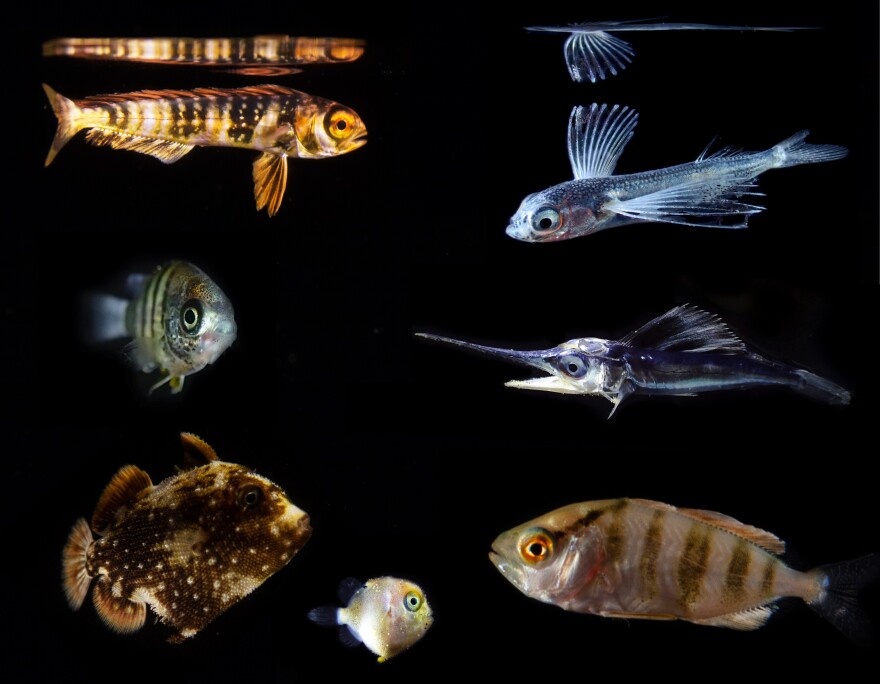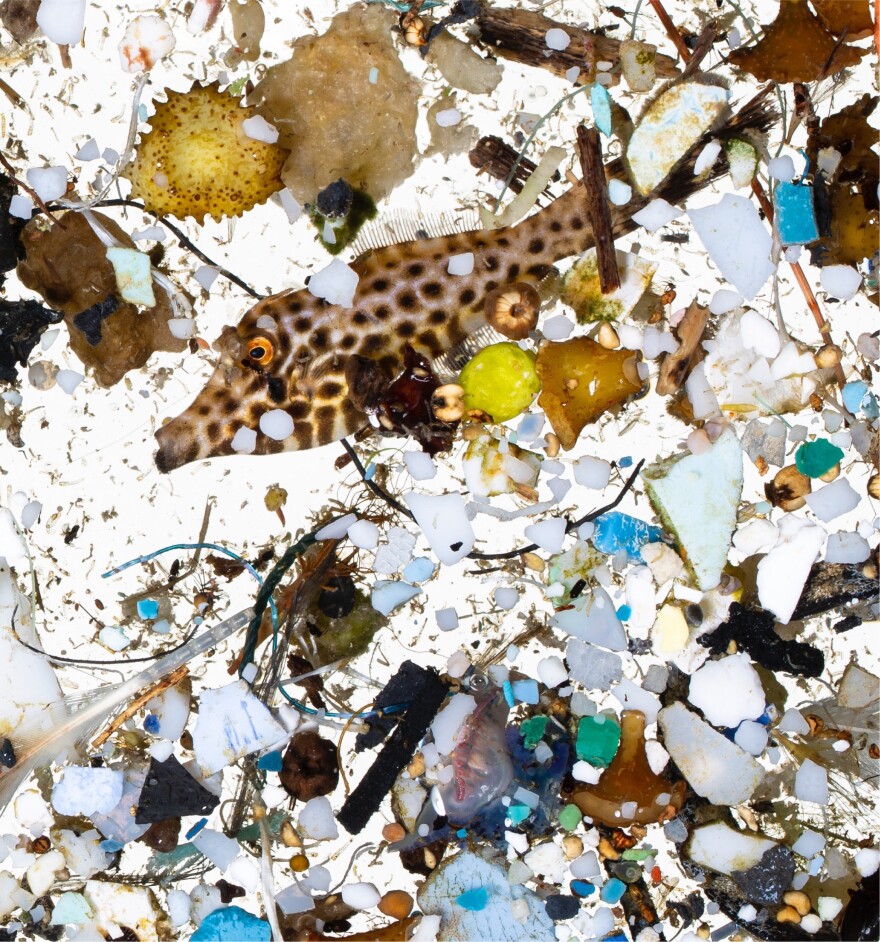Tiny bits of plastics are threatening fish nurseries in Hawaii, and likely around the globe. That's according to the latest study from the National Oceanic and Atmospheric Administration's Pacific Islands Fisheries Science Center.
Combining advance remote-sensing techniques and field-based tow surveys, researchers were able to find larval fish nursery habitats in the coastal waters of Hawaii. They identified a natural feature called surface slicks to have far more larval fish than neighboring surface waters.
Surface slicks, formed when ocean waves converge near coastlines, collect plankton, an important food source for baby fish.
"Surface slicks represent this oasis of prey for larval fish," said study co-author Jamison Gove. "It's literally this buffet line of food."
Researchers found larval fish in the surface slicks were larger and well-developed, and had increased swimming abilities. But while these slicks concentrate prey for baby fish, they also collect microplastics.

"When going over that water, out in the field, you really can't see that much plastic – you see a piece here or there," said study co-author Jonathan Whitney. "But in the sample, when we go through it on the microscope, we'd find that there's tens of thousands of really tiny pieces."
"On average, we found that in surface slicks there's 126 times more plastics than literally just a couple hundred yards away," said Gove.
Gove and Whitney estimate the amount of plastic in these slicks were, on average, eight times more than the amounts recently found in the Great Pacific Garbage Patch.
The majority of plastics found in surface slicks were less than a millimeter – the preferable size of prey for larval fish. So it's inevitable that baby fish eat the microplastics.
Researchers are still unclear how harmful palstic ingestion is to larval fish. But Gove and Whitney believe the negative health impacts in adult fish will be magnified for baby fish.
"Plastic ingestion can cause gut perforation [in adult fish]. It can essentially chew up their digestive system," said Whitney.
"And the fact that there's a non-food item in their stomach, may make them think they're satiated. And thus, not eat food. In some csaes, it can change the way they avoid predators – it can make them more vulnerable to predation, as well as other physiological impacts on growth and reproductive rates."

"Larval fish are foundational for ecosystem function and represent the future of adult fish populations," said Gove. "The fact that larval fish are surrounded by and ingesting non-nutritious toxin-laden plastics, at their most vulnerable life-history stage, is cause for alarm."
Gove and Whitney say their study is just scratching the surface of our understanding about the broader impacts of ocean plastics. It's another in a growing list of threats to fisheries and marine ecosystems, beyond climate change, habitat loss, and overfishing.




